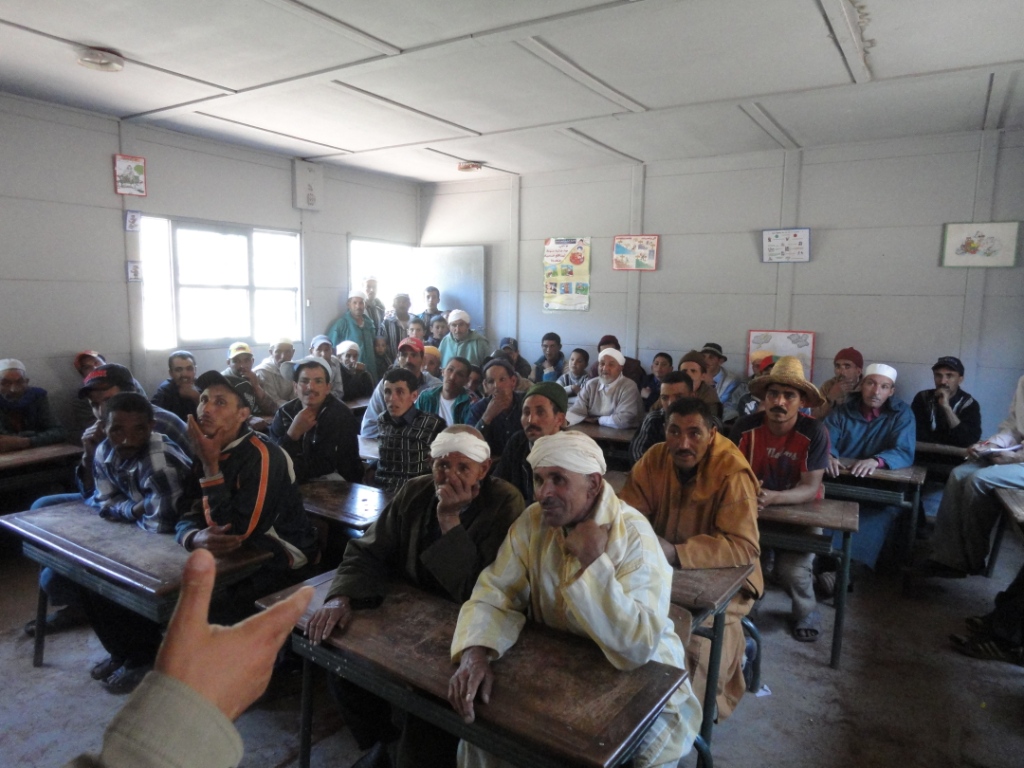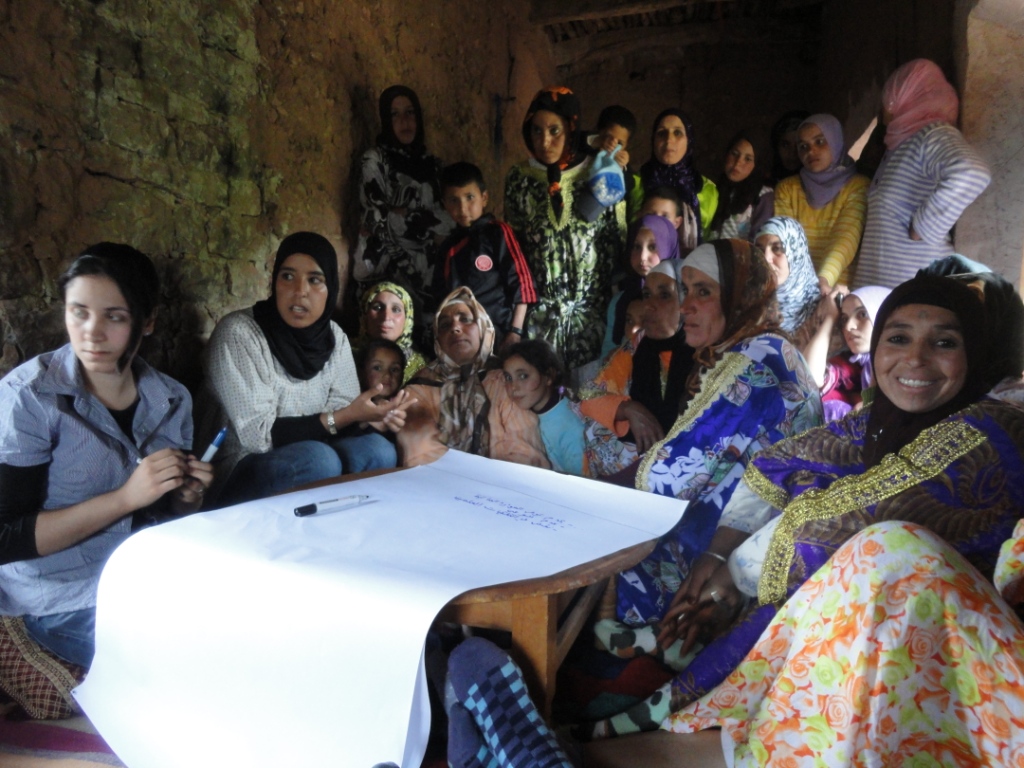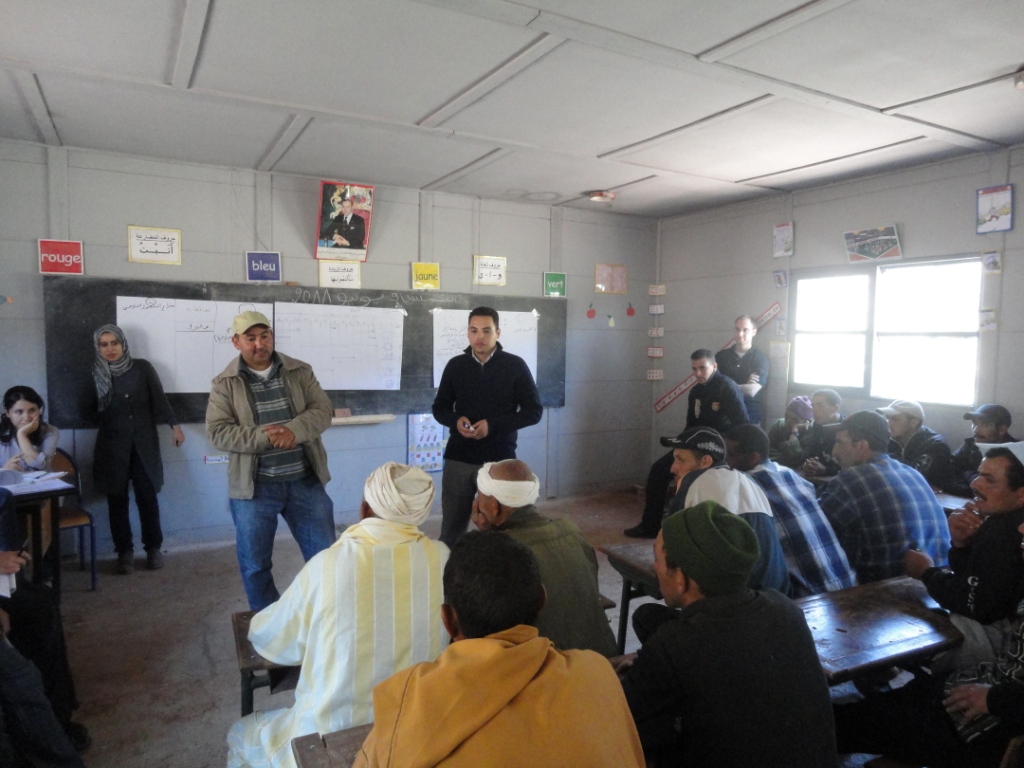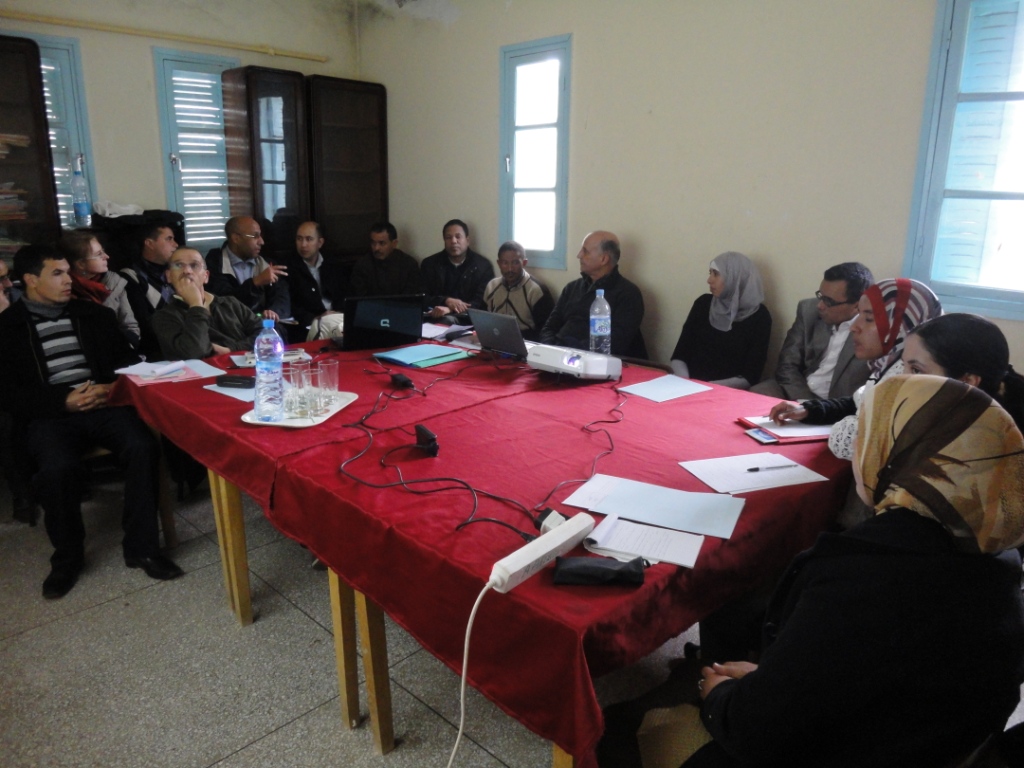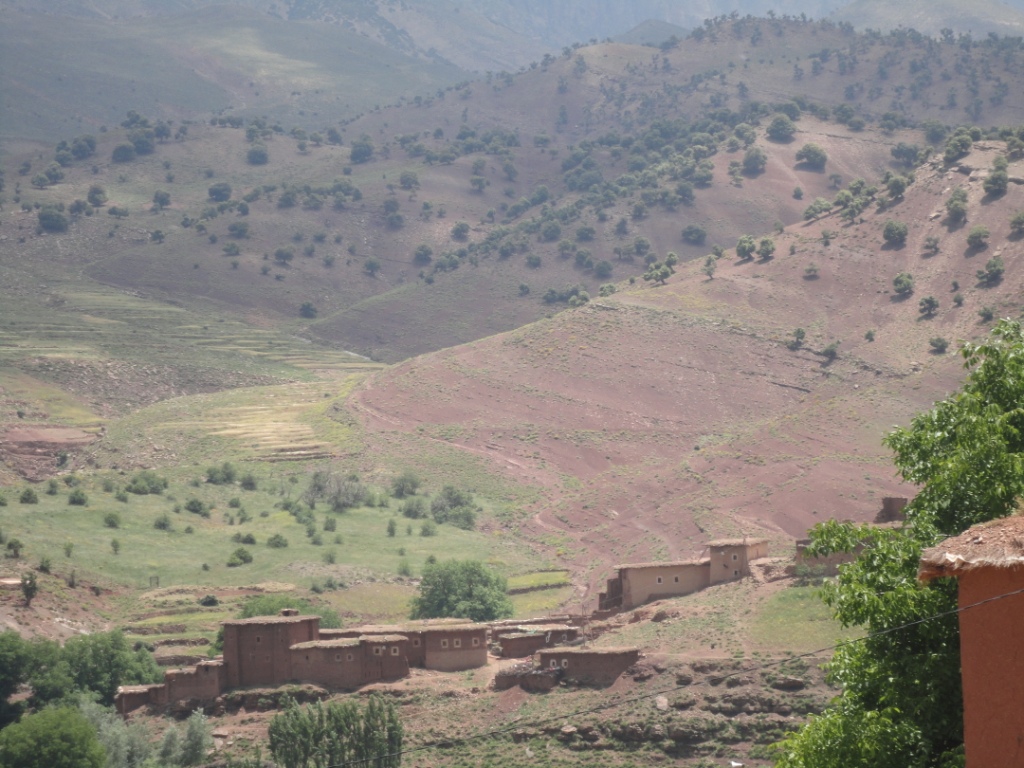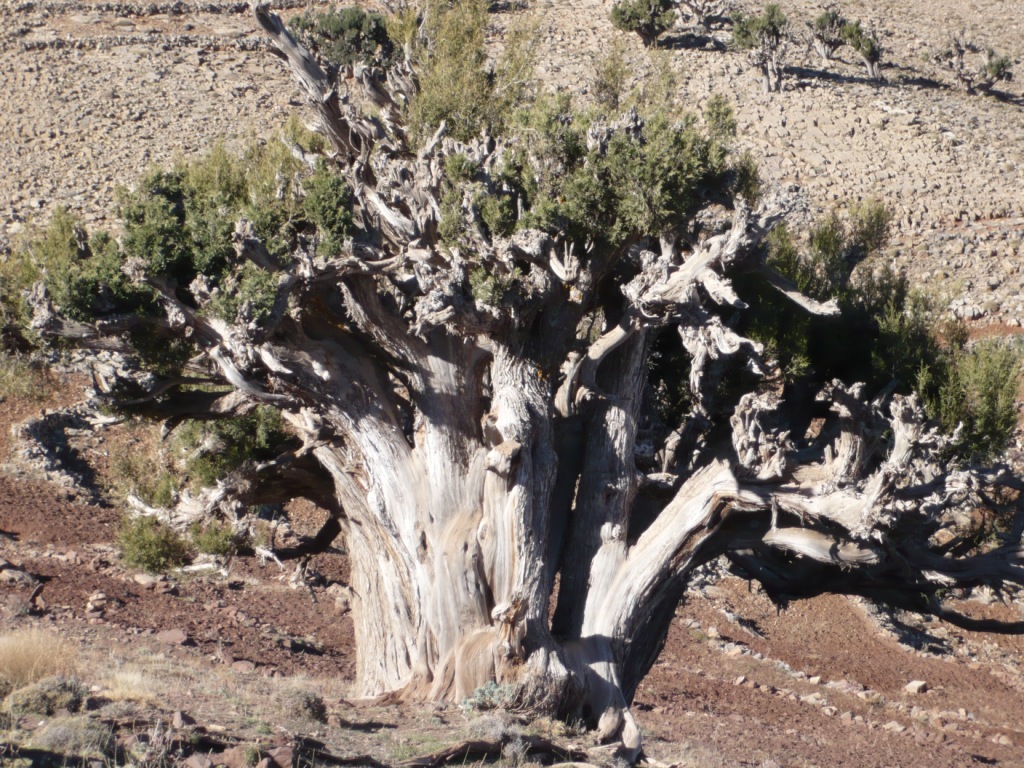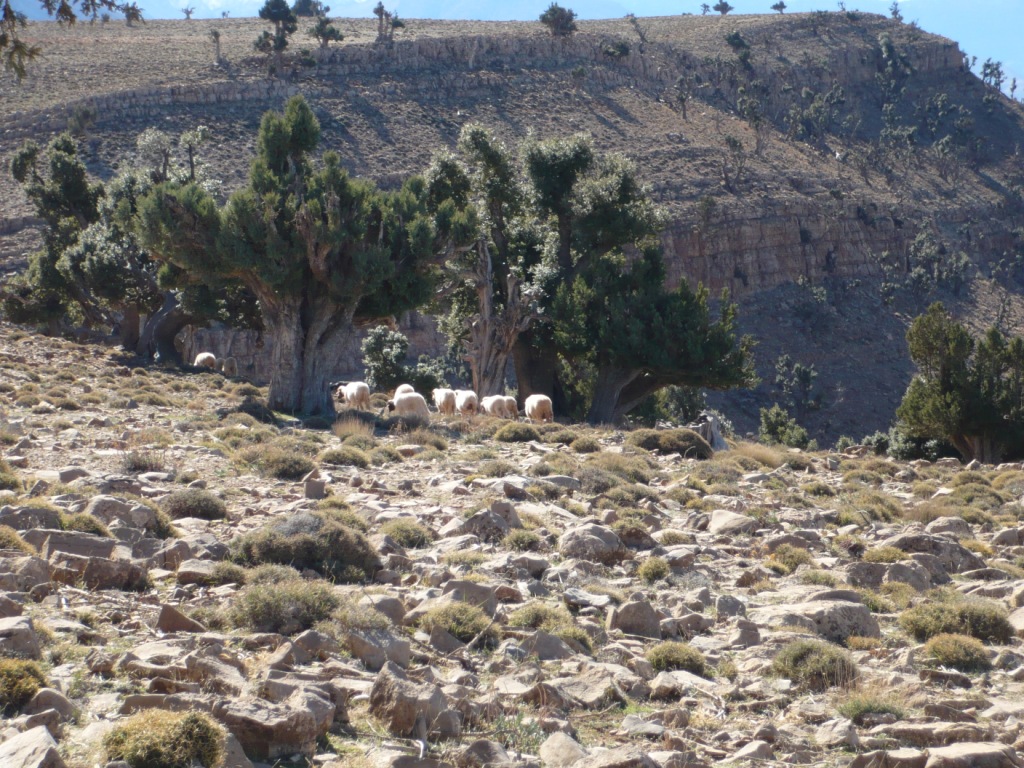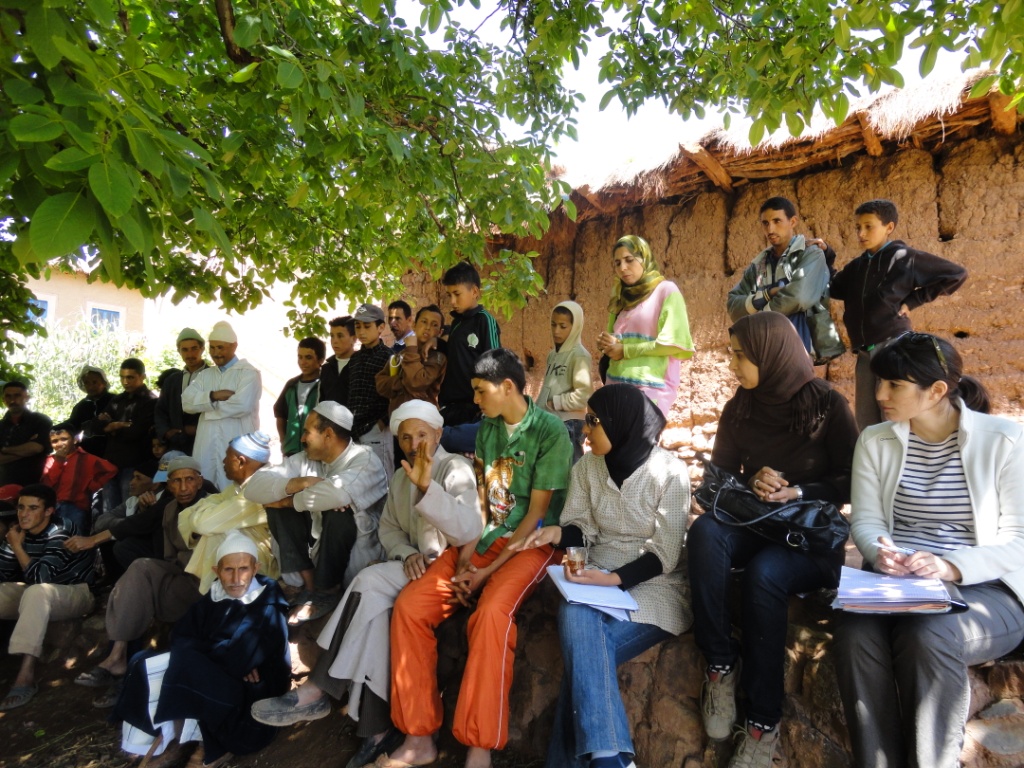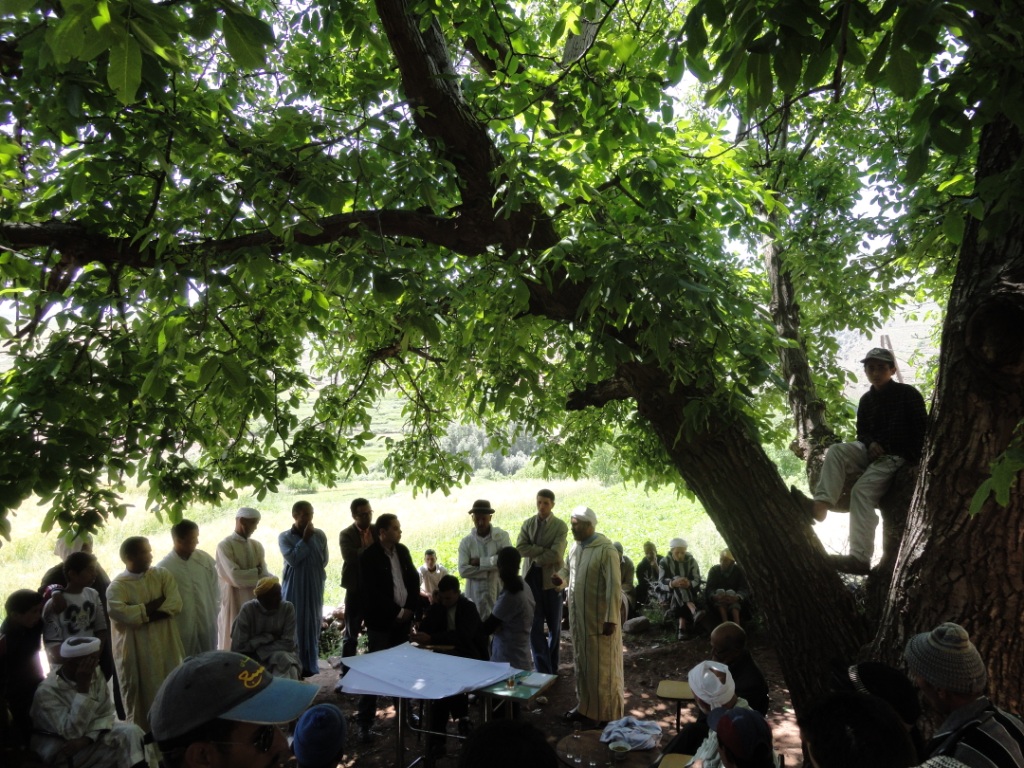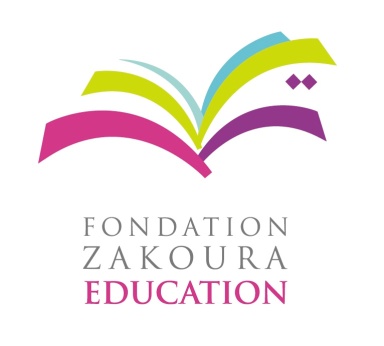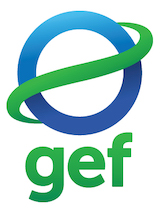CBA Morocco: Resiliency through Sustainable Farming/Forestry Strategies in Azilal Province (Zakoura)
Project Overview
This community-based adaptation project was aimed at two pastoral communities in Morocco’s Azilal province, located in a mountainous region of the High Atlas with terrace farming in the valleys and high altitude forests. The two douars (villages) of approximately 2000 people are located on opposite sides of a crest at the summit surrounded by the region's endemic species: Juniperus thurifera, slopes of green oak and Juniperus ocycedrus trees.
Climate change is expected to intensify drought risks and increase average temperatures in an already semi-arid environment, imperiling the local livelihoods and putting pressures on the forest ecosystem. To address this, the project rehabilitated the Juniperus thurifera and experimented with alternative fodder while implementing sustainable collective resource management structures at the local level.
* This project is part of Morocco's Community-Based Adaptation portfolio. *
Project Details
Douar Swit Aït Ounir and Douar Sremt are two pastoral communities in Morocco’s Azilal province, located in a mountainous region of the High Atlas with terrace farming in the valleys and high altitude forests. The two douars (villages) of approximately 2000 people are located on opposite sides of a crest at the summit surrounded by the region's endemic species: Juniperus thurifera, slopes of green oak and Juniperus ocycedrus trees.
This territory is subject to difficult living conditions such as rough climate, poor soils, extreme isolation, poverty and illiteracy. All of these factors contribute to the communities’ vulnerability to climate change. The forest is an essential means of subsistence for the local communities—forest species are exploited for pasture, as well as for use as firewood and construction wood.
The zone’s climate is semi-arid and presents strong ranges of temperatures between very cold winters and very hot summers (up to 40° C). Rainfall amounts to 500 mm on average per year, which is slightly below the national median. Changes observed by the communities over the last 20 years include an increase in the frequency and intensity of rainstorms, reduced snowfall (in quantity and duration), and, in particular, increased drought and reduced water resources.
These changes, which are expected to intensify in the future, are having a direct impact on the communities’ strategic resources and living conditions. The local ecosystems with great heritage value and strategic significance are showing signs of degradation. Juniperus thurifera, which is already threatened by overexploitation, is further imperiled by climate change-related impacts such as reduced regeneration capacity and parasite infestations. Livestock breeding, the communities’ principal source of income, has declined due to land degradation from poor forest management.
Local communities therefore need solutions suitable to both their own needs and those of the local environment. This Community-Based Adaptation project aims to reduce the communities’ vulnerability to the negative effects of climate change and increase the resiliency of the ecosystem on which they depend. It implements sustainable and supplemental forest, fodder and farming management strategies to enable the communities to protect their resources and face the growing impacts of climate change. Direct Juniperus Thurifera regeneration activities through in situ plantings of cuttings will be undertaken in community-selected parcels. Moreover, a combination of techniques aimed at improving current fodder production and developing alternatives will help guarantee community resources while promoting forest protection measures.
This project therefore relies on two innovative measures of adaptation: planting productive and adapted species, and simultaneously reducing water consumption. Shrubs planted in “vegetative hedges” will increase short- and medium-term fodder production, with the idea of reducing congested grazing land in the green oak forest. Capacity-building and awareness-raising activities in the communities will provide the technical knowhow to increase the ecosystem’s resiliency, improve sources of income, and promote a better understanding of climate change issues. This training will also provide inhabitants with the tools required to maintain the plantings and continue breeding activities under good conditions.
To guarantee the project’s continuity and sustainability, the development of Income Generating Activities (IGA) will be initiated from the first months of the project to provide the conditions for implementing innovative artisanal activities using forest resources while also respecting the ecological balance. Particular attention will be given to the Juniperus Thurifera, which is known for its aromatic and medicinal virtues.
National and local level support include the Haut Commissariat aux Eaux et Forets et a la Lutte Contre la Desertification (Government Water & Forestry services), the Direction Provinciale de l’Agriculture (Agriculture extension services), the American Peace Corps and the Embassy of Finland in Morocco.
Key Results and Outputs
Outcome 1: Strengthen forest ecosystem resiliency and pilot experiments in Thurifera grove.
Conduct experimental plantings of 400 Juniperus Thurifera (Output 1.1) and other resilient wood species, including ash and brooms (Output 1.2). Facilitate discussions/negotiations with local and regional stakeholders on the future of forest spaces (Output 1.3).
Outcome 2: Community-developed alternative fodder and farming practices
Develop 6 ha for alternative winter fodder test parcels in each douar and conduct practical workshops (Output 2.1). Produce local organic compost to improve crops with help of community grinders (Output 2.2).
Outcome 3: Mobilize and strengthen communities for adaptation in a sustainable and inclusive manner
Train project team on participative techniques for CBA (Output 3.1), and establish a sustainable management group in each village to coordinate resilient farming and forestry projects (Output 3.2). Hold discussion workshops and community awareness-raising activities on good adaptation practices (Output 3.3).
Outcome 4: Sustainable adaptation practices developed through Income-Generating Activities
Research possibilities for local Income-Generating Activities from plant resources (Output 4.1). Monitor project progress (Output 4.2) and disseminate lessons learned (Output 4.3).
Reports and Publications
News article
CBA Morocco - Zakoura - Maghreb Arab Press article on partnership with Ministry
CBA Morocco - Zakoura - MASSOLIA article on partnership with Ministry
CBA Morocco - Zakoura - Ministry of Water and Forestry partnership
CBA Morocco - Zakoura - Partnership with Ministry of Water/Forestry
PIFs
Monitoring and Evaluation
Monitoring and evaluation for community-based adaptation is a new field, and the CBA project is piloting innovative approaches to evaluating the success of locally-driven adaptation projects, and generating lessons to inform ongoing practice.
Key considerations in M&E for CBA include:
- Grounding M&E in the local context: M&E for CBA should avoid overly rigid frameworks, recognizing community heterogeneity and maintaining local relevance
- Capturing global lessons from local projects: CBA projects are highly contextualized, but lessons generated should be relevant to stakeholders globally
- Incorporation of both quantitative and qualitative indicators: to ground projects in tangible changes that can be objectively evaluated, and to capture lessons and case studies for global dissemination
To these ends, the CBA project uses three indicator systems: the Vulnerability Reduction Assessment, the Small Grants Programme Impact Assessment System, and the UNDP Climate Change Adaptation Indicator Framework.
The Vulnerability Reduction Assessment (VRA)
The VRA is a question-based approach with the following aims:
- To make M&E responsive to community priorities
- To use M&E to make projects more accountable to local priorities
- To make M&E capture community ideas and local knowledge
- To gather community-level feedback to guide ongoing project management
- To generate qualitative information
- To capture lessons on specific issues within community-based adaptation
- To generate case studies highlighting adaptation projects
The VRA follows UNDP's Adaptation Policy Framework, and is measured in a series of meetings with local community stakeholders. In these meetings, locally-tailored questions based on standard VRA questions/indicators are posed, and the community assigns a numerical score on a 1-10 scale for each question. Progress is evaluated through changes in scores over the course of implementation, as well as through qualitative data collected in community discussions surrounding the exercise.
UNDP has developed a Users Guide to the VRA (Espanol) (Francais) as a tool to assist practitioners to conceptualize and execute VRA measurements in the context of CBA projects.
The SGP Impact Assessment System (IAS)
The CBA, being a project of the GEF Strategic Priority on Adaptation, aims to increase the resilience of ecosystems and communities to the impacts of climate change, generating global environmental benefits, and increasing their resilience in the face of climate change impacts. To this end, the CBA projects use the SGP's impact assessment system for monitoring achievements in GEF focal areas (focusing primarily on biodiversity and sustainable land management).
The IAS is composed of a number of quantitative indicators which track biophysical ecosystem indicators, as well as policy impact, capacity development and awareness-building.
UNDP Climate Change Adaptation Indicator Framework
CBA projects also track quantitative indicators from UNDP's adaptation indicator framework, corresponding to the thematic area on natural resources management. More information on UNDP's indicator framework can be found on the UNDP climate change adaptation monitoring and evaluation website.
* This description applies to all projects implemented through UNDP's Community-Based Adaptation programme. Specific details on this project's M&E will be included here as they become available. *
